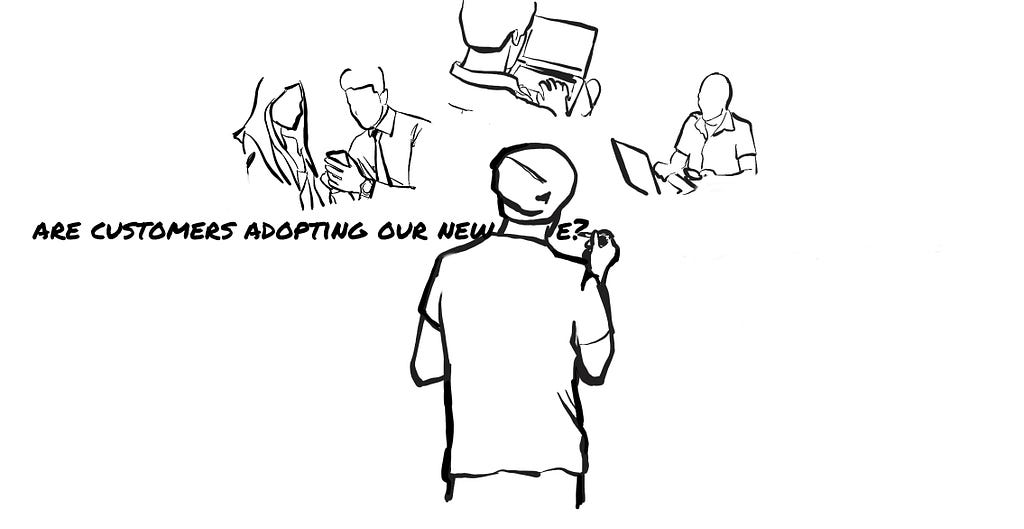Latest news about Bitcoin and all cryptocurrencies. Your daily crypto news habit.
 All Sketches © Brian Crofts 2018
All Sketches © Brian Crofts 2018
Early in my career, I witnessed a handful of product successes and failures. Among those experiences, there is one that stands out among the rest. And, it wasn’t a win…it was an epic failure.
I remember the business leaders being surprised — shocked actually — that the product did not take off as forecasted.
We had our best people on it. The customer problem was clear. The solution innovative. But a year later, momentum had died and the product was dead.
It’s often easier to connect the dots looking backwards — and certainly not as easy in the moment. As with most failures, we learned a few things.
I am still convinced that the team was building the right product.
So, what happened?
They were measuring the wrong thing.
In my product-building experience, knowing what to measure can often be complicated.
When advising teams, I always encourage them to begin with their intuition. I ask, “what questions do you have?” … “what are you most curious about?” … “what do think about on your way into work, etc.?”
We write down the answer to those first few questions and then we begin.
However, product analytics is an interesting process of discovery — a combination of starts and stops — a series of asking “why?” over and over.
Success Metrics
I’ve had success in larger B2C businesses following a series of tollgates to help ensure that we not only have the right measure, but that we have the right measure at the right time.
The toll-gating system went something like this:
1. Early Stage
1.1 Unit of One
Does any one person love your product — even in the early days of development?
Does this person represent a broader set of consumers that have a similar problem?
Is this person willing to recommend your product to a friend or colleague?
Are you able to frame a hypothesis for who will pay for the offering?
1.2 Cohort Optimization
As you invest more into the product, are you seeing improvements in funnel conversion for each new cohort of customers?
Are you seeing increased engagement?
Is your product experience becoming increasingly efficient i.e. are you decreasing the time it takes for your customer to realize the benefit of your solution?
Have you validated a sustainable growth model by way of in-market experimentation?
2. Later Stage
2.1 Market Winner
Are you seeing an increase in penetration relative to the addressable market?
Are you gaining market share at a faster rate than the alternatives?
Have you validated your ability to deliver profitable revenue growth with scale?
2.2 Financial Success
Have you been able to deliver profitable revenue growth for a sustained period of time?
Can you deliver on both your short and long term commitments?
Can you continue to invest in innovation and growth?
Before the failed product launch, the business had an “if we build it, they will come” assumption.
For context, customer growth was our number one priority — so it made sense that the primary measure for success was, in fact, customer growth.
Because we were in a mature market and knew our customers well, we expected immediate results.
But even in this particular context, the approach was flawed. Instead of expecting customer growth, the business would have been better served to narrow focus, nail the customer benefit, and optimize the experience.
By focusing first on building something amazing that creates delight, you’ve earned the right to scale — to focus on market share and the financial rewards.
No matter the context, focus first on product love. Think big, start small, and scale fast!
How will you measure your product? was originally published in Hacker Noon on Medium, where people are continuing the conversation by highlighting and responding to this story.
Disclaimer
The views and opinions expressed in this article are solely those of the authors and do not reflect the views of Bitcoin Insider. Every investment and trading move involves risk - this is especially true for cryptocurrencies given their volatility. We strongly advise our readers to conduct their own research when making a decision.




